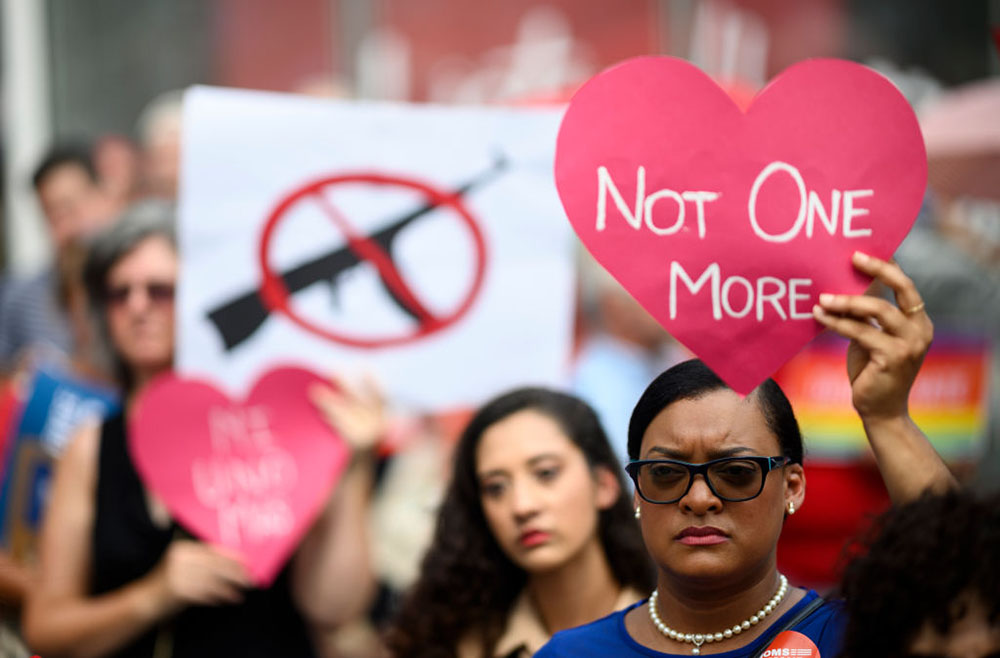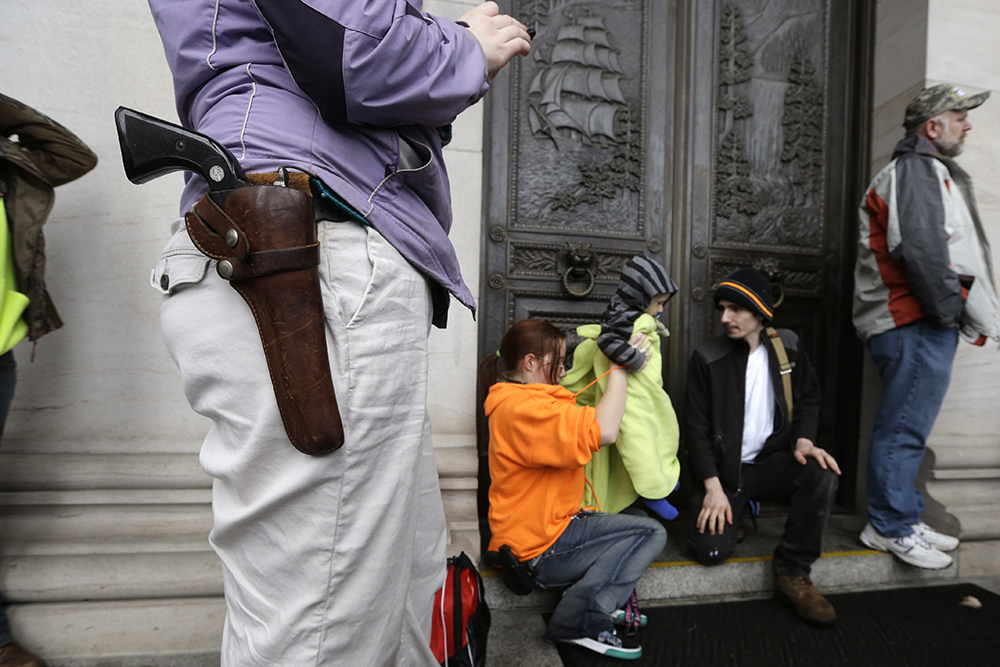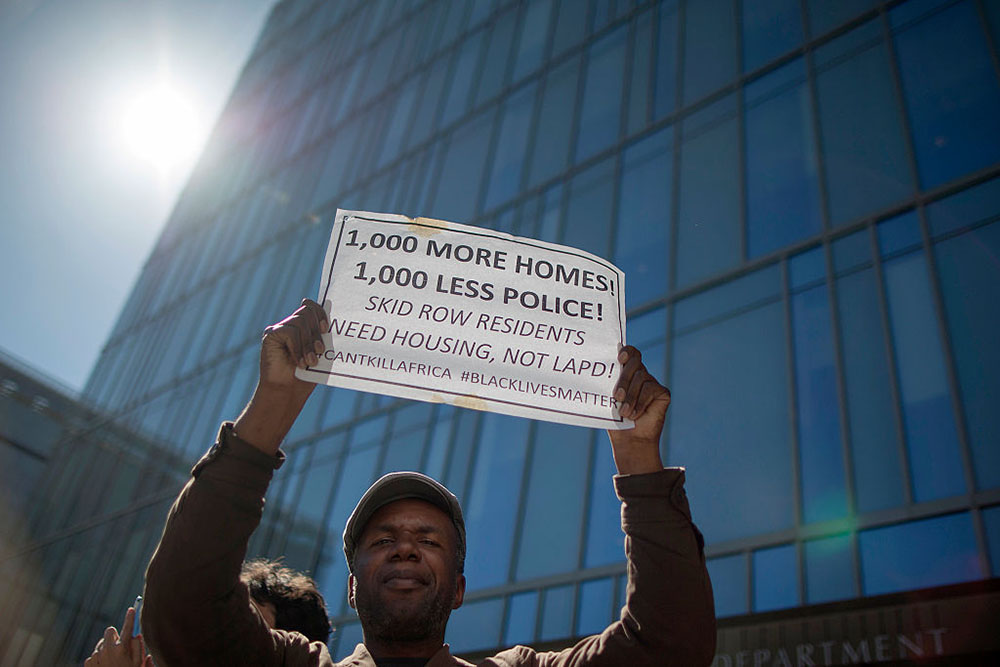My walk to the Metro each day takes me past a construction site, where there are currently four large cranes looming overhead. Walking along Rhode Island Ave. in the morning means having several large trucks barrel past, exhaust fumes spewing, loaded with building materials bound for what’s being called the “Bryant Street development.”
In the next couple of years, this stretch of northeastern Washington, D.C., will transform from a hole in the ground next to a church and down the road from a McDonald’s and a Sav-A-Lot into an Alamo Drafthouse Cinema, some luxury apartment buildings, and, rumor has it, a grocery store.
Get Talk Poverty In Your Inbox
And because the area has been designated an Opportunity Zone, investors will be able to reap hefty tax benefits for the money they put into these projects — which shows exactly how the Opportunity Zone program, created by the 2017 Trump tax cut law, has gone awry.
Opportunity Zones are intended to spur investment in low-income communities that aren’t traditionally targets for businessfolk or developers. In exchange for putting their money into areas usually starved of capital and leaving it there for a certain amount of time, investors will pay lower tax rates than they would otherwise. Leave an investment in an Opportunity Zone for 10 years, and the capital gains earned will be tax-free; returns to investors could be increased by up to 70 percent thanks to the program, according to one estimate.
More than 41,000 Census tracts nationwide were eligible to be designated as Opportunity Zones, and investors are already pushing for the upcoming 2020 Census to expand those areas.
On the surface, Washington D.C.’s Edgewood is a perfect fit. The poverty rate in the neighborhood is nearly 30 percent, and the median income is just $28,000, according to Census Bureau data, in a city where the median income is above $82,000.
But there are a couple of big problems. First, the developments that will receive tax benefits because of the Opportunity Zone were well underway before the bill creating Opportunity Zones even existed, thanks in part to a $24 million subsidy from the city itself. The lead development company, MRP, freely acknowledges that its project would have gone ahead without tax incentives.
“We were well underway, almost finalized with our development plans and our program and mix [before the Opportunity Zone designation],” John Begert, a vice-president at MRP, said at the project’s groundbreaking in July, according to WAMU. “We were able to take advantage of it, but it wasn’t an original thesis of the business plan and of the development.”
This is a problem endemic to both Opportunity Zones specifically and corporate tax incentives more broadly: They end up subsidizing companies for investments those companies would have made anyway. According to one study, up to 75 percent of tax incentives given to companies in order to locate somewhere specific actually had no bearing on that company’s decision.
All across D.C. the sort of development occurring in Edgewood has occurred without anything like an Opportunity Zone to incentivize it. A similar debate took place around the building of D.C.’s publicly-funded baseball stadium: Proponents like to point to the surrounding economic development as proof that the $750 million Nats Park was a good investment, but don’t really grapple with the fact that other neighborhoods across the breadth of D.C. developed in exactly the same way without a taxpayer-funded sports complex.
But there’s also another question worth asking: Even if the Opportunity Zone were driving actual investment in the neighborhood, would that investment help the people at whom it’s ostensibly aimed? Like much of D.C., Edgewood is gentrifying rapidly; it’s a historically black neighborhood with more and more white people (myself included) moving in and driving up real estate prices, as it’s one of the few pockets of the city where there is any chance of a young professional being able to purchase a house somewhat near the Metro system. For white households in the neighborhood, the poverty rate is 2 percent; for black households, it’s 31 percent, according to the Census.
Rent and home prices are inevitably on their way up; there are currently two homes within the Opportunity Zone that are on the market for around $950,000, per Redfin. This will all hurt current residents who can’t afford higher living expenses.
Those same residents threatened with displacement likely won’t be able to take advantage of the new housing being built either, because D.C.’s average rent for a two-bedroom apartment is $1,550, and many so-called luxury buildings charge much more. Future jobs at the movie theater or other retailers likely won’t pay enough to cover that amount, and just 116 of a total 1,450 units in the Bryant Street development will be designated as affordable housing under the city’s Inclusionary Zoning program, which allows for units to be set aside for families making 50, 60, or 80 percent of the area’s median income.
The new development is meant to entice new people, not aid the ones already there.
Small businesses are under pressure due to the increasing property costs. Our local dry cleaner recently closed after the owners’ landlord refused to renew their lease. It will be replaced by a condo building. In order to make way for the new development, a Big Lots store, a couple of fast food joints, an H&R Block, and a kind of strange drum shop were also all forced to close.
There are no requirements that investors even track whether members of the community are benefiting from the money and amenities Opportunity Zones bring in. D.C. received a grant from a private foundation that will enable it to do at least some data collection, but the zone is already here and the grant was just announced this week. So, the cart is very much before the horse.
As city councilmember Brianne Nadeau wrote last year, “Unfortunately, the design of the program has some serious flaws, and will likely accelerate the patterns of displacement caused by runaway capital that we’ve already seen for decades, but on a federally-subsidized scale.” Indeed, the developer who receives a tax break that had nothing to do with the decision to invest in Edgewood undeniably benefits from the Opportunity Zone. But after that, it’s unclear who else comes out as a winner. There will almost inevitably be displacement, and nothing is being done to help the folks affected by it, particularly those who aren’t homeowners.
My neighborhood certainly isn’t the only one in D.C. where projects that were already planned, surrounded by blocks that were gentrifying all on their own, received Opportunity Zone designations. Nor is this a situation unique to the capital city. But it’s a particularly egregious example of how the rhetoric around a program meant to help economically disadvantaged communities doesn’t come close to matching the reality.
To sum it up, that my neighborhood is an Opportunity Zone is patently absurd.











